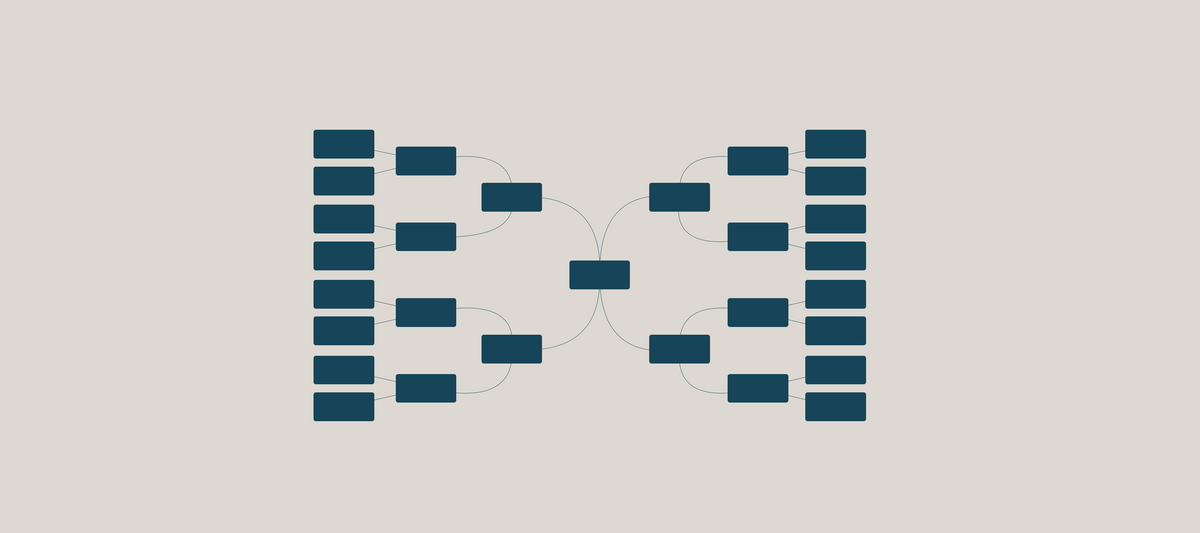

Introduction
Making a family tree is a fascinating exploration into your past. Whether you want to use digital tools or prefer a pen and paper in your hands, this process can give you a sense of belonging and heritage, particularly as you uncover the stories of your Scottish ancestry.
Let's explore how to make a family tree, the tools you can use, and the pros and cons of digital vs traditional methods.
Table of content
How A Family Tree Works
A family tree is essentially a diagram of your ancestry, showing connections to your older relatives, going back through each generation. It often resembles an organisational chart, with a single person, probably you, at the base branching out to various ancestors. These branches lead to boxes, each containing details of a family member, the details will be simple things like dates of birth, marriage, and death.

How To Make A Family Tree: Begin With The Basics
Write down everything you know about your closest relatives—names, birthdates, professions and places lived.
Talk to family members to start filling in the blanks. There will be a limit to how much you can gather at this stage so be patient. This first step is crucial for both digital and paper family trees.
Later you can ask relatives for anecdotes and check for old photos or documents. Check out our guide: How to Interview Your Relatives About Your Scottish Family History.

💡Before you start! Make sure you ask relatives if anyone else has started a family tree or genealogy research project. You could have a foundation to build on and maybe even someone to collaborate with!
Family Tree Tools: Digital Or Paper?
Everyone will have their preference for documentation. Digital tools will make life easier for some and come with lots of other benefits for genealogy research. However, they can come with a hefty price attached over time if you are persuaded into a subscription service.
Paper documentation and family tree making can be a far more creative and personal experience, allowing for a tactile connection to your history.
Digital Tools For Family Tree Making
First let's look at your options for digital tools, these are split into two types, online platforms and software. Here we will explain each option and go over the pros and cons of each.
Online Genealogy Platforms
Online platforms have revolutionised the way we approach genealogy, making it easier for anyone to dive into their family history. Websites like Ancestry.com, FamilySearch.org, MyHeritage, and Findmypast are the most well known. All of them offer tools and databases to create, edit, and research your family tree, but they also have features that cater to different needs and preferences.

- Databases: These platforms provide access to billions of historical records from around the world.
- User-Friendly: Designed with the user in mind, these websites offer intuitive navigation and tools.
- Community: Many of these platforms have built-in features for sharing your research with family members and connecting with other users.
- DNA: Some platforms, like Ancestry.com and MyHeritage, offer DNA testing services that can reveal your ethnic origins and connect you with biological relatives you may not have known about.
- Cost: While some platforms offer free basic accounts, accessing the full range of records and tools often requires a paid subscription.
- Privacy: Sharing personal and family information online raises privacy issues. It's important to review each platform's privacy policy.
- Information Overload: The vast amount of data available can be overwhelming for beginners.
- Errors: Online trees can contain errors, either from original records or from user-contributed information. Verifying the accuracy of the data can be time-consuming.
💡Tip: How To Use Online Genealogy Platforms Smartly To Save Money
Worried about the cost of online genealogy subscriptions? Here's a simple plan to use these services without paying forever:
- Save Important Finds: When you find family records or documents online, download them to your computer right away. This keeps your information accessible, even after your subscription ends.
- Export Your Family Tree: Before your subscription runs out, export your family tree as a GEDCOM file. This is a special file that lets you move your family tree to other genealogy programs, which might be free or cheaper. You could export what you've learned from your subscription into software that you only pay for once.
- Download Your DNA Info: If you did a DNA test, download your DNA data. You can use this data later with different services or software without needing to pay again.
- Be Smart with Your Subscription: Only subscribe when you really need it. Once you've got all you need, you can stop the subscription. Watch for special deals to save money if you decide to subscribe again later.
Using these tips, you can get the most out of expensive online genealogy platforms without being stuck in a costly subscription.
Genealogy Software
Software for family tree making, such as Gramps, Family Tree Maker, and Legacy Family Tree, offer a different approach to documenting and researching your genealogy compared to online platforms. These programs can be installed on your computer, providing a more private and customisable environment for organising your family history.

- Privacy and Control: One of the main advantages of using software is the increased privacy and control over your data.
- Customisation: Genealogy software often provides extensive customisation options, allowing you to tailor the appearance and organisation of your family tree to your liking.
- One-time Cost: Unlike online platforms that may require a subscription, many software options come with a one-time purchase price.
- Offline Access: With your data stored locally, you can access and edit your family tree without an internet connection.
- Complexity: Some users may find genealogy software to have a steeper learning curve than online platforms.
- Data Sharing and Collaboration: While some software allows for sharing files or syncing with online trees, it generally lacks the immediate, built-in community and collaboration features of online platforms.
- Updates and Compatibility: Users must manage software updates manually to ensure compatibility with their operating system and to access new features.
- Lack of Integrated Records: Unlike online platforms that offer access to billions of historical records, software users often have to source and manually enter this information.
How To Make A Paper Family Tree
Paper-based family trees offers a blend of creativity and traditional that digital lacks. Here are some ideas to help you with this approach.
Family Tree Charts
- Pre-printed Templates: Begin with pre-printed family tree charts available at genealogy stores or online (you'll find lots available on Etsy). These templates often come with spaces for entering names, dates, and places, making it easy to visualise ancestral connections, the drawback is that you are stuck with the format the template dictates.
- Custom Designs: For those with artistic skills or a desire for something more personalised, designing your own family tree chart can be a rewarding project. Use large sheets of archive-quality paper and draw your tree, incorporating symbols or illustrations that represent your family's heritage.
To help you get started, here are some common design approaches to family tree charts. Use one of these as your starting point but don't be afraid to embellish or adapt the design to make something truly personal to you and your family.
Family Tree Chart Designs
Pedigree Chart
The pedigree chart is a cornerstone of genealogy, mapping out an individual's direct ancestors. Starting typically with the person conducting the research, it works its way back through generations, linking parents, grandparents, and beyond. Each ancestor is represented in a box, connected by lines that illustrate familial relationships, forming an expanding tree.

Hourglass Chart
The hourglass chart typically shows you or whoever is the focus of the chart in the centre with ancestors spanning out above and descendants spanning out below. This dual perspective creates a view of one's familial position. In a design you could leave blank boxes for future generations. This might be a good option if you have a growing family and want to reflect on your descendants, not just your ancestors.

Bowtie Chart
The bowtie chart is just the same as the hourglass but you would have the ancestors going either left or right and decedents in the opposite direction.

Fan Or Circle Charts
Fan charts begin with the person of interest, probably yourself, centralised at the bottom, and radiate outward to show ancestors in a semi-circular layout, offering a clear and neat design.
Circle charts expand on this by forming a full 360-degree design, allowing for more generations. Or you could have your ancestors above and dependents below, much like the hourglass design, leaving unannotated segments of the circle for future generations. Both chart types are excellent if you're aiming to create an elegant visual of your ancestry.

Do What Works for You
Nothing matters more than organising your genealogy research using a system that you're likely to stick with. Whether it's the tactile pleasure of paper records or the convenience of digital databases, the best system is the one that fits your working style and makes your journey into your Scottish heritage both productive and enjoyable.
Experiment with both methods to discover the perfect balance for your genealogy project, no matter which you choose, you will be rewarded with a treasure you can share with future generations.
The Hybrid Approach: Combine Digital And Paper
For many people, a hybrid system combining the benefits of both digital and paper methods is the most effective. This approach allows for the easy sharing and organisation of digital tools while preserving the personal touch and reliability of paper records. Consider digitising important documents for backup and sharing while keeping physical copies safe for their sentimental value and ease of access.
What Details Should You Add To A Family Tree?
Whether you're using a digital tool or designing a paper family tree, you're going to need to add some basic details about each person on your tree. How much information you want to add is up to you, but here are some details that you might want to present:
Basics
- Full Name
- Birth Date
- Birth Place
- Death Date (If applicable)
- Death Place (If applicable)
Extras
- Marriage Date(s) and Place(s)
- Occupation
- Education
- Residences
- Photo or Portraits

There is no strict way of doing this, it is entirely up to you what you want to include however, the richer the information you provide the more captivating your family tree will be. Think about balancing information with design considerations for the best outcome.
Now you've learned the basics of how to make a family tree, you can start building a literal picture of your past! If you want more tips and guides on genealogy this post: The Ultimate Guide To How To Research Your Scottish Heritage can help you the rest of the way.


